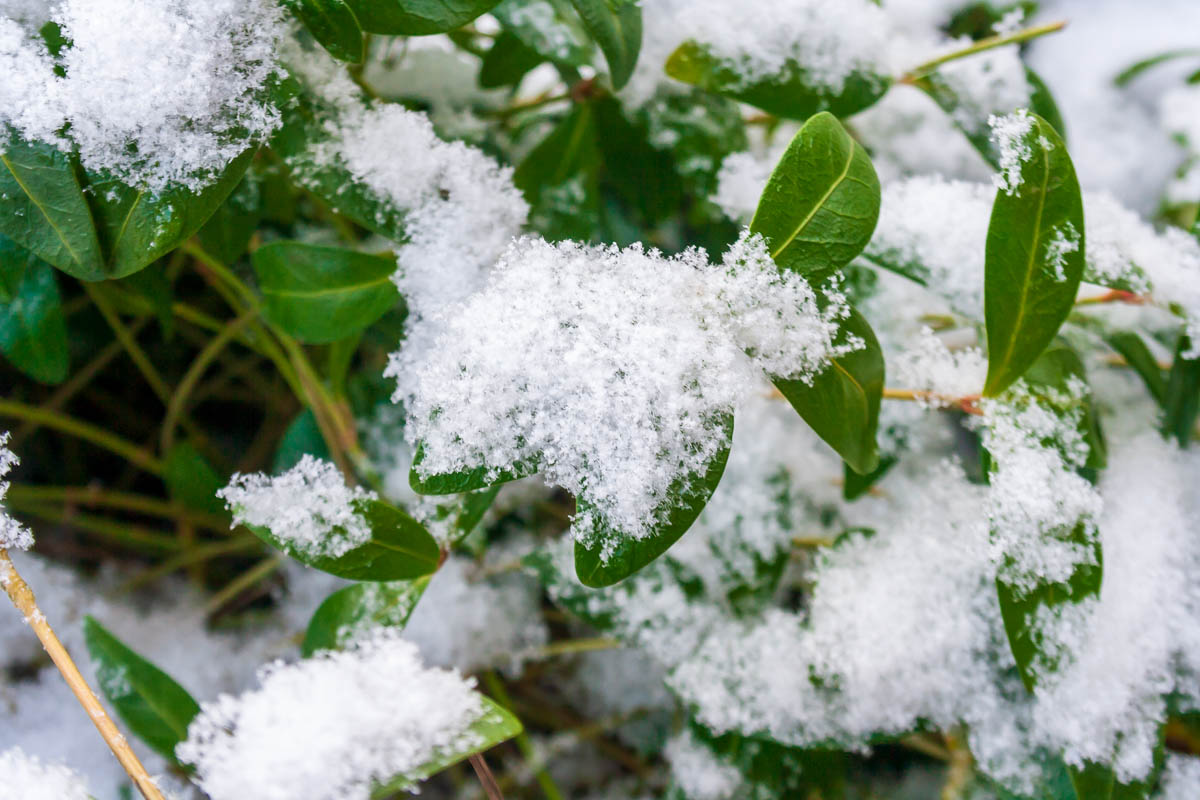Top 10 Early Bloomers
These 10 bulbs, perennials, or shrubs are hot out of the gate after a long and cold winter which makes them great candidates for your garden.
Gardeners are paying more attention to how their landscape looks from November through February now that winters aren't always covered in snow, even in our coldest states.
Besides the obvious evergreen shrubs and trees, a surprising number of perennial flowers – the ones that come back year after year – hold their leaves in winter to add to the four-season interest.
Unlike familiar daylilies, hostas, and black-eyed Susans that turn brown and wither to the ground at fall’s first killing frost, “evergreen” perennial foliage looks good all winter long – especially ones with golden, maroon, or variegated foliage.
Evergreen perennials aren’t just about winter looks, though.
Besides adding color and life to the otherwise barren winter ground, these plants help head off winter soil erosion and block winter annual weeds from sprouting in cold-weather openings.
Odds are you have a few evergreen or semi-evergreen perennials in the yard already. You can tell by watching for ones that don’t brown out soon after a hard frost.
Some of the most common groundcovers:
Some of the most common garden perennials:
Some of the most common ferns and grass-like species:
A lot of evergreen perennials tend to be low-growing creepers and spreaders, making them useful as groundcovers under trees, between shrubs, and on hard-to-mow slopes.
Besides the aforementioned vinca, ivy, and pachysandra, one of the best-looking choices is creeping sedum. This family of succulents takes heat and drought, hugs the ground in a dense mat only a few inches tall, and blooms pink, white, or yellow in spring or summer. One, in particular, called "Angelina," has a fern-like texture and bright golden foliage that changes to reddish-orange in the winter and then "goldens" up again in the spring.
For shadier spots, consider these evergreen groundcovers:
For sunny spots, consider these options:
If you’re looking for a color other than green, check out a couple of golden grass-like perennials – golden sedge and a sweet flag variety called ‘Ogon.’
Even bigger and bolder in winter is golden yucca – desert natives that grow sword-like leaves three feet tall and send up large white flower spikes in spring.
If you like black foliage, black mondo grass is a short grass (under one foot) with true black blades and a slowly spreading habit.
Christmas fern, autumn fern, and the Dixie wood fern are three good green-leafed but textural plants that hold their foliage through at least part of most winters.
Clumping bamboo is another taller grassy plant that stays green all winter, and even most ornamental grasses (switchgrass, bluestem, feather reed grass, Indian grass, etc.) add movement and texture to the winter landscape despite turning brown.

Snow-covered Vinca | Photo_Pawel / iStock / via Getty Images
Evergreen and semi-evergreen perennials will almost tell you what maintenance they need and when they need it. A good rule of thumb is not to cut anything as long as it’s green and looks healthy.
True evergreen perennials such as yucca, hens and chicks, ajuga, ‘Angelina’ creeping sedum, and pachysandra will just pick up with new growth when the weather warms in spring. No need to cut them at all.
Others will stay green or mostly green throughout winter, but as new growth occurs in spring, last year’s growth starts to brown or flop. That’s your cue to snip or pinch off the ratty stuff, including taking plants down to a stub if the whole thing is browning.
Plants that usually need this kind of selective spring tidying:
Care needs can vary from year to year, depending on how cold and windy winter was.
The nice thing, though, is that most perennials will send up new foliage in spring no matter how you cut them in the off-season.

Snow Rose | Franz Schallmeiner / iStock / via Getty Images